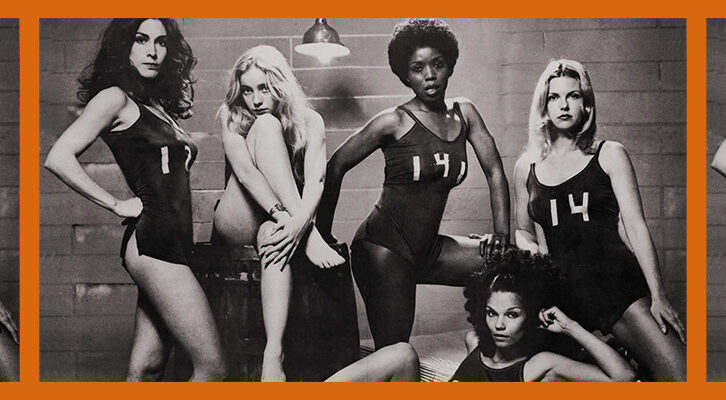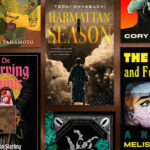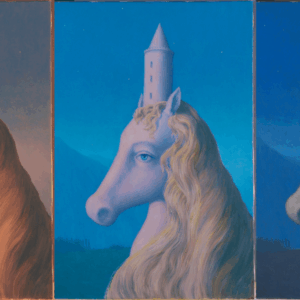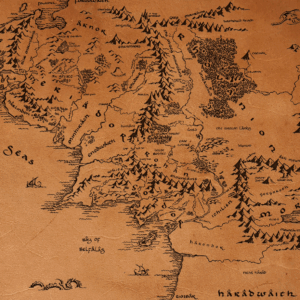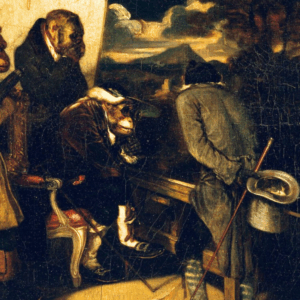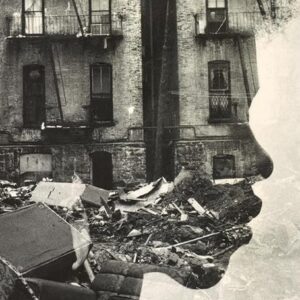
How Houston’s Third Ward Became a Hub of Black Art, Culture, and Opportunity
Lauren O'Neill Butler on Shotgun Houses, Segregation, and the Art of Rick Lowe and John Biggers
No one has written more beautifully about the shotgun house than the late theorist, educator, and social critic bell hooks. While the shotgun style and name may trace back to Haiti and Africa in the eighteenth century and earlier, it was the most popular type of house in the Southern United States from the end of the American Civil War through the 1920s. Of these narrow rectangular residences, hooks argued:
The traditional shotgun house is more than a powerful marker of African American cultural landscape. It is a symbol of a diasporic mode of living represented architecturally around the world by folks moving from enslavement, indentured servitude, rebellion against colonialism, and colonial occupation into freedom. It stands as a global symbol of liberation.
It was with this spirit of liberation that Project Row Houses (PRH) was born in the Third Ward, a historically and predominately Black neighborhood in Houston, Texas.
In 1837, Houston was divided into political geographic districts called “wards,” hence the name Third Ward. The founding of Trinity United Methodist Church in 1848, a congregation created by enslaved people, remains one of the most important events in the history of the area, as well as the establishment of Emancipation Park—land bought by a group of African Americans in 1872.
From roughly the 1890s through the 1950s, the Third Ward was a thriving region for commerce and social activities along Alameda and Emancipation Avenue (then called Dowling Street). The flourishing economic and cultural activities of the area in these years—a time of enforced racial segregation under Jim Crow laws—are often compared to the Harlem Renaissance.
It was with this spirit of liberation that Project Row Houses (PRH) was born in the Third Ward, a historically and predominately Black neighborhood in Houston, Texas.
However, infrastructural developments, such as the construction of State Highway 288 in 1939, cleaved the physical community in two. And though the Third Ward served as the center of the civil rights movement in the city, the population and services were on the decline there.
After the passing of the Civil Rights Act in 1964, which outlawed segregation, some residents began to slowly move to racially integrated neighborhoods in Southwest Houston. Many local businesses closed, while discriminatory practices such as redlining—in which financial services are withheld from neighborhoods that have significant numbers of racial and ethnic minorities—stymied new growth, and Nixon’s War on Drugs consumed generations of young men. This systemic oppression continued into the 1990s as poverty became endemic in the area.
In the early 1990s, the artist Rick Lowe was working as a volunteer at the S.H.A.P.E. Community Center in the Third Ward, and was thinking alongside other African American volunteers there about how to merge political theory and practice. Born in 1961 in Russell County, Alabama, as the eighth of twelve children, Lowe grew up on a rural sharecropping farm about thirty-five miles from the nearest town in the southeastern area of the state.
His upbringing in the South, during the civil rights era, was a formative experience, and something that he wanted to express through art. He studied painting at Georgia’s Columbus College, but dropped out during his junior year in 1982, and moved to Biloxi, Mississippi, for a yearlong residency at the Springer Art Center. Here, he began to merge painting with politics, as indicative in his Victims series (1983–), which he exhibited in a 1984 solo show at the Biloxi Library and Cultural Center.
According to Lowe, these early paintings were “very didactic,” representing victims and victimizers of gun violence to explore issues ranging from police brutality, poverty, and war. The works, in his words, are “narrowly focused on working- class issues, to speak directly to working-class folks.”
Using standard four-by-eight-foot sheets of plywood and inexpensive house paint, Lowe distanced himself from the easel-based painting he had studied at Columbus College and instead made large-scale, modular works at a more monumental scale, to echo the magnitude of his subjects and themes. This method allowed him to produce, hang, and deinstall paintings as large as eight-by-twelve-feet with ease.
After moving to Houston in 1985, Lowe became known in the local arts community for his commitment to direct-action campaigns and for organizing through the local chapter of Amnesty International and the Union of Independent Artists, a political advocacy group that focused on freedom of expression in public art and environmental issues. In 1986, during a peace rally, Lowe presented a guerrilla art installation of his Victims works on the public plaza of Houston’s City Hall. In 1988, he exhibited Victims Untitled (1987) in the First Texas Triennial at the Contemporary Arts Museum in Houston.
The mixed-media installation exemplifies the blend of styles he was utilizing at the time: a crepuscular landscape is bookended by a hooded Ku Klux Klan member and a burning cross on one side, while a noose is sculpturally affixed to the surface of the panel on the other side. Below the Klan member, Lowe added texts derived from the Declaration of Independence and a history of the KKK. The work is a response to the 1981 lynching of Michael Donald by the Ku Klux Klan in Mobile, Alabama.
In April 1990, after the 1989 deaths of Byron Gillum and Ida Lee Delaney at the hands of police officers, Lowe presented an outdoor exhibition at the S.H.A.P.E. Community Center featuring paintings from his Victims series. The installation featured a large-scale tableau of Lowe’s life-size painted plywood figures. When a grand jury decided not to indict officer Scott Tschirhart, who had killed Gillum, the community asked Lowe if they could host a press conference with his work in the background. “It was a big moment for me and solidified my art activism at that time,” Lowe has said.
Not long after, a local high school group visited Lowe’s studio, and, as the artist has often recalled, something happened that “just shattered” him. A student noted that that while his work was hitting on all the issues that are relevant to low-income communities, the people in the Third Ward didn’t exactly need a greater awareness of them.
“We don’t need people to come back and tell us what the issues are,” Lowe remembered the student saying. “We already know; we see it, we live it. If you’re an artist and you’re creative, why can’t you create some kind of solutions?”
Lowe began to invite members from the African American activist community to rallies being held by the Union of Independent Artists, and they came. But, when Lowe invited the Union of Independent Artists to the Black activist community to protest police brutality, racism, and corruption, he received a “rude awakening”:
“There were people that just did not come,” he recalled. “I heard rumors that folks were saying that I was trying to use the Union of Independent Artists for my own personal agenda…that was when I kind of stepped away from the Union.” The departure opened a door for Lowe to focus mainly on activism within the African American community.
In 1992, Lowe was invited on a S.H.A.P.E.-organized tour of the Third Ward with city officials, developers, and organizers to identify dangerous buildings they thought should be torn down. When the group arrived at a block of small (six-hundred-square foot) shotgun houses at Live Oak and Holman Streets, it was identified as “the worst” block on their route. (Such houses were being demolished across the South.)
It was a pivotal moment for Lowe. Beyond the homes’ forlorn and derelict appearances, he saw something else—a way that the area could return as a thriving community epicenter of Black culture, creativity, and commerce with a deep sense of pride. Lowe envisioned a “temporary kind of guerilla style art project,” where primarily Black artists could work in one house each and create site-specific artworks.
“I was also thinking about the community brain drain,” Lowe remembered. “Everybody’s always leaving, and nobody’s coming in. I thought of myself as a part of that brain drain. The resources that I had accumulated over time were not going back into the neighborhood. So, how do you pull those things together?”
The twenty-two houses Lowe saw in all that day reminded him of the artist Dr. John Biggers (1924–2001), the founding chairman of the art department at Houston’s Texas Southern University, a historically Black college. Biggers was born in a shotgun house in North Carolina and became known for his vibrant, complex, and symbolic murals and paintings, which often depict the dwellings.
“I see them as I walk the Third Ward of Houston—the rhythm of their shadows, the square of the porch three over four like the beat of a visual gospel,” Biggers said of the houses. Biggers’ art underscores the richness of Black culture, specifically in the Third Ward, but his paintings also more generally trace the architectural style of row houses back to their roots.
In these works, Biggers “conveys historical notions of home that have been crucial to African Americans,” as hooks points out, adding, “Our vision of home must be mapped, charted, named.”
That’s exactly what the founders of Project Row Houses set out to do. Lowe had been organizing with a group of intergenerational artists—James Bettison (1958–1997), Bert Long Jr. (1940–2013), Jesse Lott (1943–2023), Floyd Newsum (1950–2024), Bert Samples, and George Smith—and conveyed to them not only what was being planned for the shotgun houses in the Third Ward, but also how what he had seen that day was reminiscent of Biggers’ aesthetic.
At the time, the arts in Houston were taking a professionalizing turn, becoming “less wild than the 1980s,” according to Lowe, when artists “felt freer to experiment and play.”
The Museum of Fine Arts was expanding into another building, and the Core Residency Program at the museum’s Glassell School of Art was beginning to gain national attention.
At the time, the arts in Houston were taking a professionalizing turn, becoming “less wild than the 1980s,” according to Lowe, when artists “felt freer to experiment and play.”
Yet, that didn’t necessarily entail more visibility for local Black artists, even for those who had participated in the Core Program, such as Bert Samples. The group Lowe was organizing with—now called the “Magnificent Seven”—was thinking about how it would be better to create something new rather than to wait for opportunities.
As erstwhile PRH curator Ryan N. Dennis has remarked,
PRH was created out of conversations, from a place that, in some ways, was responding to a lack of inclusivity from institutions and organizations throughout Houston. Black artists living and working, both collaboratively and independently, were trying to create opportunities for themselves that were not being given.
Lowe began researching artists who had made art with a practical application. “I ran across a book with Joseph Beuys in it and there was a chapter called social sculpture,” Lowe remembered. “He defined it as the way we shape and mold the world. It was interesting to me, and I started thinking, how do you make social sculpture?” This was a moment when problem solving and questions of value began to coalesce in his mind.
Lowe began tracking down the owner of the houses, who was then living in Taiwan. He also started researching grants and recruited Deborah Grotfeldt (1950–2022), who had been working for seven years as assistant director at Houston’s DiverseWorks—a multidisciplinary arts nonprofit, where Lowe was a board member. At DiverseWorks, Grotfeldt assisted with fundraising, worked directly with artists coordinating programs in all disciplines, and managed the renovation of a large, raw warehouse space into an arts facility.
Grotfeldt and Lowe set up PRH as a nonprofit organization, which led to more fundraising efforts. In its first year of operation, PRH received crucial seed funding of $25,000 from the National Endowment for the Arts, which led to an additional $113,000 in contributions from corporations, private foundations (such as the Elizabeth Firestone Graham Foundation), individuals, and $136,000 in-kind construction materials over the following year. The Heimbinder Family Foundation also provided a $120,000 no-interest loan for securing the properties from the present owner.
The founding artists and Grotfeldt devoted PRH’s first year on-site to raising funds, developing relationships in the community, planning programs, and recruiting and managing volunteers and contractors. PRH’s founders learned that to be an activist organization, they needed to speak directly to the local community: Who are the voices that aren’t being heard? And what are their concerns? They also felt it was important to build PRH’s board of directors from local artists, volunteers, and business owners in the Third Ward.
Lowe negotiated a five-year lease/purchase agreement effective September 1993 for the entire block and a half of twenty-two houses, though he had originally only wanted to lease ten. (In hindsight, it was lucky that the owner insisted on the entire twenty-two-house package as it created an opportunity to expand PRH’s public art and education initiative to later include historic preservation and more community services.)
That fall, staff from arts organizations throughout Houston, including the Menil Collection and DiverseWorks, labored alongside volunteers of all ages to help the artists repair the houses. (The director of the Menil allowed Mondays to be a day off for some of the museum’s employees so that they could lend a hand at PRH.)
The corporate sponsor Chevron renovated the outside of the houses and organized a workday with over three hundred employees. For months, volunteers numbering in the hundreds fortified porches, removed trash from lots, and hung drywall.
During the renovations, the founding artists began to think about how they could convey a visible artistic presence in the project and the neighborhood. In April 1994, with the houses’ windows and doors still boarded up, PRH cofounder Jesse Lott organized The Drive By exhibition, and invited artists to create installations on the exterior of fifteen houses.
Israel McCloud, a third-generation Houstonian artist, recalled that he wanted the mixed-media piece he created from found objects, Home Free, “to be a representation of one of the residents of the neighborhood looking outside with optimism and hope.”
McCloud, whose father was a muralist, grew up making large-scale public art by using extension ladders and scaffolds (this was before there were lift trucks). In the late 1980s, he gained attention for painting Black Power murals for busi- nesses owned by the local Jamaican community in Houston. By the 1990s, he was one of the codirectors of the Midtown Art Center, a flourishing institution that, as McCloud suggests, was part of another Harlem Renaissance-like moment in Houston, one of “creative intensity and collective solidarity.”
On June 1, 1994, renovations were finished on the first twelve of twenty-two structures. Each one was “adopted” by a corporation, a Houston-based museum, patron, or church. For instance, the Trinity United Methodist Church raised $5,000 for one house through donations, and its choir also performed on-site.
After PRH’s grand opening in October 1994, its art program grew to include commissioned projects, summer residencies, and fellowships. The Drive By show kickstarted PRH’s now longstanding tradition of inviting artists to install works in and around the houses, for exhibitions referred to as the Artist Rounds, which have become a biannual event, with openings in March and October.
For the most part, the art program has remained focused on preserving the Third Ward’s identity, history, and culture. Each round focuses on a theme, which often concerns politics. PRH has become a model not only for artist-led activism but also for what political art can look like and what it can do.
For instance, Round 47: The Act of Doing: Preserving, Revitalizing and Protecting Third Ward, was curated by Ryan N. Dennis in fall 2017, and included installations such as Marc Furi’s I Love 3W, a house that featured a Monopoly-inspired installation about gentrification in the neighborhood.
For this work, Furi also created video interviews with key local artists such as McCloud, who talks about making artwork in the neighborhood for four decades as a way of fighting for the “multifaceted collage, interdisciplinary Black Mecca” at the heart of the Third Ward’s cultural identity. Indeed, McCloud’s murals, often painted on walls donated by business owners, have always been about “advocacy, identity, and giving face to who we are, what we are, where we are going.” (Seen today, they offer a strong contrast to the often blasé murals now found throughout Houston’s shopping areas.)
In 1995, PRH began its arts education program and developed an after-school curriculum for local children who were seeking a creative outlet in the afternoons. Many of the children were interested in Lowe’s desktop computer, a then-novel technology, which he generously allowed them to explore. That year, PRH also initiated an opportunity to support and empower working single women between the ages of eighteen to twenty-six in the community with the Young Mother’s Residential Program (YMRP).
The YMRP gives its residents one year of free housing, counseling, and on-site day care to allow them to finish their education. The first participants in the program moved into their homes in January 1996. The YMRP continues to be successful, with women pursing higher education and law degrees, and becoming business owners, community leaders, and even PRH board members after they leave.
In just three years (1993–96), PRH created eight gallery houses for the Artist Rounds; two administrative houses; a house for afterschool and summer programs; the Sisters-in- Progress house, offering support programs; seven houses for the YMRP program; a community garden where five houses had been torn down; a house for performance programming; a woodworking shop; and a house for storage.
Three years later, in 1999, PRH received the nearby and legendary Eldorado Ballroom as a gift from a trustee, Hubert Finkelstein. This historic Third Ward site of blues and jazz performances, weekly talent shows, and sock-hops remained open from 1939 until the early 1970s. Artists such as B. B. King, Sam Lightnin’ Hopkins (a legendary Houston-based blues musician), and many other Black performers played at the Eldorado.
Clearly, PRH has become a unique gathering place—also known as a third place—for dialogue engaging the community in cultural, social, political, and educational debates.
After four years of renovations, the space reopened in March 2023, after a $9.6 million renovation. Notably, PRH collaborated with Houston Community College on the 2003–2005 Eldorado Series, presenting and recording African American jazz musicians who played at the Eldorado Ballroom from the 1940s to 1960s.
Clearly, PRH has become a unique gathering place—also known as a third place—for dialogue engaging the community in cultural, social, political, and educational debates. While PRH’s art and education programs are a longstanding and valuable resource, what has really set the institution apart is its dedication to the community through enrichment programs (tutoring, financial empowerment, and food distribution) and neighborhood development (historic and cultural preservation)—and most of all, its ongoing creation of low-income housing.
Though, as Lowe has pointed out, “Our interest is not just in affordable housing. It’s also to create opportunities for artists to live here. Diversity allows people to grow.” Currently, PRH offers a mix of subsidized and market-rate housing, and several artists live on its “campus.”
______________________________

The War of Art: A History of Artists’ Protest in America by Lauren O’Neill Butler is available via Verso.
Lauren O'Neill Butler
Lauren O'Neill-Butler is a writer and editor. Her first book, Let’s Have a Talk: Conversations with Women on Art and Culture, (Karma, 2021) brings together nearly ninety interviews. She is also the author of The War of Art: A History of Artists' Protest In America. A former Senior Editor of Artforum, she has also contributed to Aperture, Art Journal, and The New York Times. In 2020, she received an Andy Warhol Foundation Arts Writers grant.











